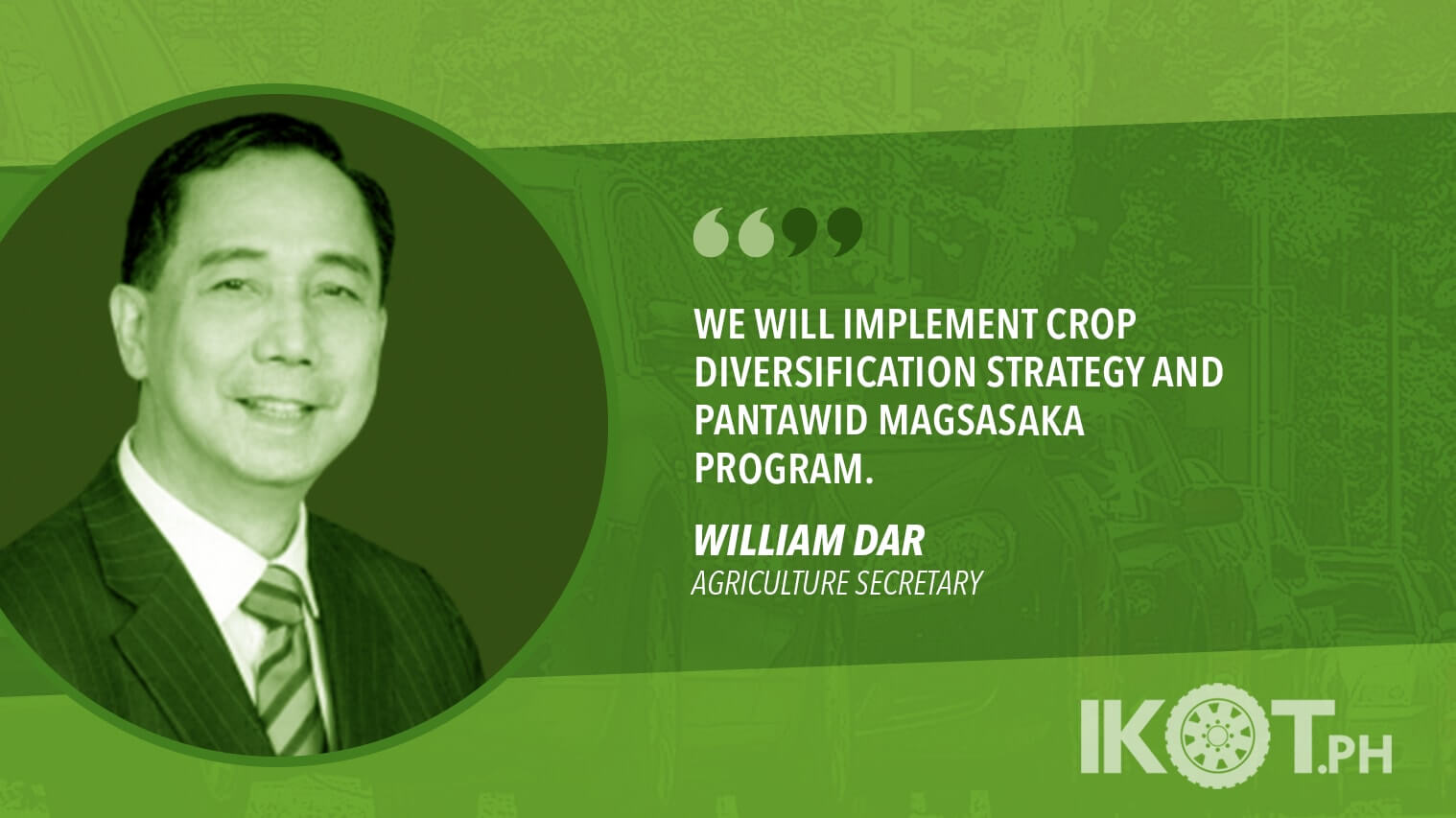Newly appointed Agriculture Secretary William Dar is targeting a 3-4 percent growth in the agriculture sector until 2022.
This comes amid a decline in agricultural output in the second quarter of the year, which was recorded at -1.27 percent, as compared to 0.12 percent for the same period last year, according to the data released by the Philippine Statistics Authority (PSA).
The drop in output was attributed to the decline in crop production. Increases in output however, were recorded for livestock, poultry, and fisheries.
At current prices, the value of agricultural production amounted to P24.6 billion, which is 5.20 percent lower than the previous year’s level.
In the first six months of 2019, agricultural output went down by 0.24 percent.
Crops registered a 5.70 percent drop in production during the second quarter of 2019. It contributed 47.42 percent to the total agricultural output.
Palay and corn recorded decreases in production by 5.82 percent and 8.73 percent, respectively. Output increases were noted for onion, garlic, mango, tobacco, rubber, eggplant, pineapple and abaca.
At current prices, the value of crops production amounted to P215.5 billion or 11.09 percent lower this period. From January to June 2019, a 3.16 percent reduction in crops production was recorded.
On the other hand, livestock production, which shared 17.41 percent in the total agricultural output increased by 3.22 percent in the second quarter of the year.
Hog and dairy came up with output gains during the period. The value of livestock production amounted to P77.7 billion at current prices, indicating a 1.96 percent decrease this quarter. In the first half of 2019, livestock production grew by 2.24 percent.
Poultry production also went up by 4.14 percent and it accounted for 17.75 percent of the total agricultural output in the second quarter of 2019.
Except for duck, all poultry commodities posted increased production. At current prices, the value of poultry production at P56.7 billion was down by 2.26 percent compared to the previous year’s record.
From January to June 2019, poultry production increased by 4.73 percent.
Meanwhile, fisheries output, which grew by 1.90 percent, contributed 17.41 percent to the total agricultural production during the second quarter of the year.
Increases in production were recorded for yellowfin tuna, round scad, tiger prawn and tilapia. At current prices, the value of fisheries production amounted to P74.7 billion or higher by 9.42 percent this period. Fisheries output was up by 1.51 percent in the first six months of 2019.
To be able to improve farm output, Dar said he will focus on the implementation of interventions funded by the Rice Competitiveness Enhancement Fund (RCEF) to assist farmers in increasing their produce.
“The implementation of the RCEF will be our focus for the next 100 days.”
“This will be our focus for the next 100 days. To correct and accelerate the implementation of the RCEF,” the agriculture chief noted.
The the agriculture head would also implement “crop diversification strategy” and “pantawid magsasaka program” that will provide assistance to adversely affected rice farmers due to the rice tariffication regime.
Such strategy includes the provision of hybrid rice seeds, distribution of inputs like fertilizers, construction of shallow tube wells, and even direct cash assistance, he said.
“We need a catch-up plan.”
“Let’s have a plan to compensate what we lost this wet season. We need a catch-up plan because it is during the dry season when all components of RCEF are expected to be in place,” Dar added.
He said there is also a need to “review and reorient” existing programs and projects of the DA towards increasing productivity, competitiveness and income.
“The President’s (Rodrigo Duterte) advocacies (is) to make the country food secure and to bring more development in the countryside by making smallholders farmers and fisherfolk more prosperous. By the end of his term, the livelihood and quality of life of farmers and fishermen should improve,” Dar concluded.

